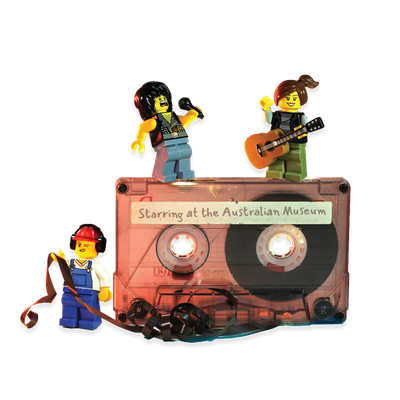Your search returned 37 results
By Page Type
By Tag
- All
- fish (966)
- blog (698)
- fishes of sydney harbour (400)
- First Nations (293)
- Blog (236)
- AMRI (169)
- archives (165)
- Aboriginal and Torres Strait Islander (135)
- Eureka Prizes (131)
- insect (126)
- Ichthyology (125)
- geoscience (109)
- minerals (102)
- climate change (98)
- podcast (94)
- Fish (91)
- Anthropology (89)
- International collections (80)
- Minerals Gallery (78)
- wildlife of sydney (78)
- Labridae (77)
- frog (73)
- gemstone (70)
- history (63)
- photography (63)
- staff (61)
- Mollusca (60)
- gem (59)
- Birds (58)
- education (57)
- Gems (56)
- Indonesia (56)
- AMplify (54)
- shark (54)
- people (53)
- exhibition (52)
- earth sciences (50)
- past exhibitions (50)
- Gobiidae (48)
- Pomacentridae (45)
- sustainability (45)
- Serranidae (44)
- science (43)
- lifelong learning (42)
- Earth and Environmental Science (41)
- Syngnathidae (41)
- Ancient Egypt (40)
- Bali (40)
- bird (40)
- dangerous australians (40)
-
Dinosaur - Minmi paravertebra
https://australian.museum/learn/dinosaurs/fact-sheets/minmi-paravertebra/Minmi paravertebra was an ankylosaur, a quadrupedal dinosaur covered in bony armour. It was discovered in 1964 near Minmi Crossing, Queensland, and was the first ankylosaur known from the Southern Hemisphere.
-
Perameles bowensis
https://australian.museum/learn/australia-over-time/extinct-animals/perameles-bowensis/Perameles bowensis, from the Pliocene of New South Wales, is one of the oldest and most primitive of the Peramelidae, the family to which most Australian bandicoots belong.
-
Bramble Cay Melomys, Melomys rubicola
https://australian.museum/learn/australia-over-time/extinct-animals/melomys-rubicola/The Bramble Cay Melomys, or Bramble Cay mosaic-tailed rat was officially declared extinct in 2019. It is considered the first mammal to become extinct due to climate change.
-
Australia’s extinct animals
https://australian.museum/learn/australia-over-time/extinct-animals/Learning about Australia’s extinct fauna helps us to create links through time that relate the animals of the past with those of today.
-
Paljara tirarense
https://australian.museum/learn/australia-over-time/extinct-animals/paljara-tirarense/Paljara tirarense was a small ringtail possum (family Pseudocheiridae) from the early Miocene of South Australia and northwestern Queensland. Ringtail possums were once much more diverse than they are today, distributed across many now-dry parts of Australia that were forested during the Cainozoic.
-
Dinosaurs - Platypterygius longmani
https://australian.museum/learn/dinosaurs/fact-sheets/platypterygius-australis/Platypterygius longmani was an ichthyosaur, a dolphin-like marine reptile that roamed the Eromanga Sea of inland Australia during the Early Cretaceous.
-
Find out more
Tails from the Coasts
Special exhibition
On now![]()
-
Find out more
Burra
Permanent kids learning space
10am - 4.30pm![]()
-
Discover more
RELICS
Special Exhibition
Opens 16 August 2025![]()
-
Discover more
Minerals
Permanent exhibition
Open daily![]()





